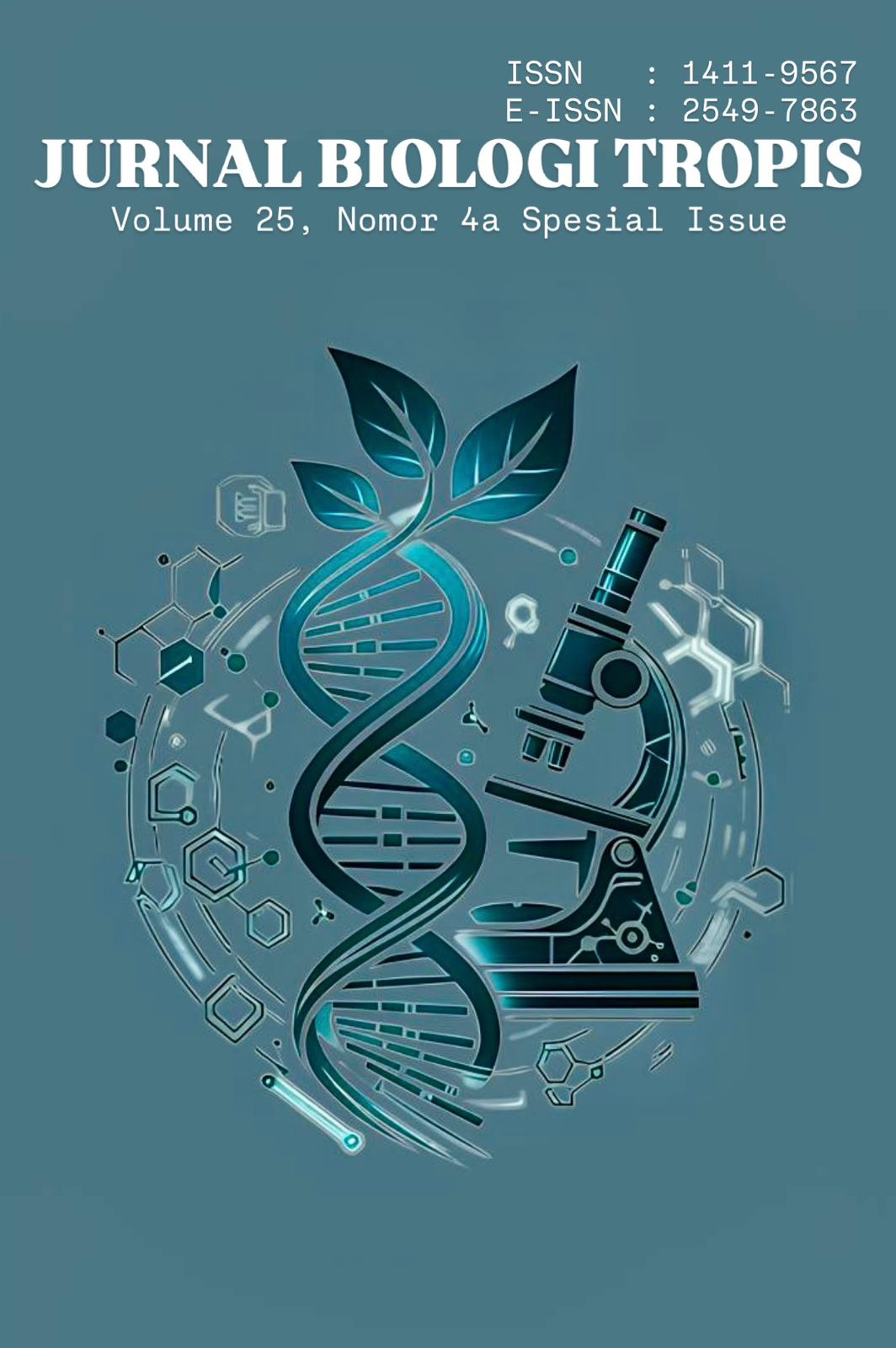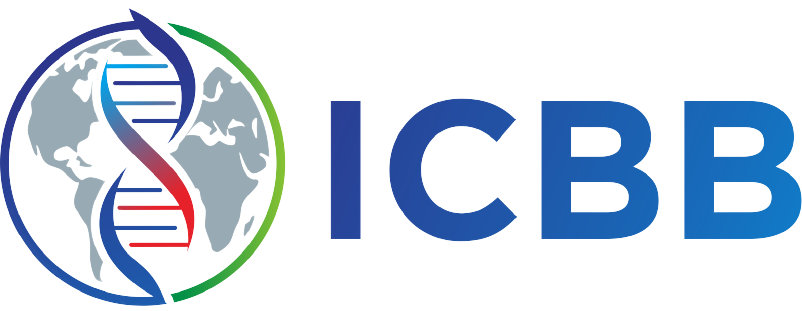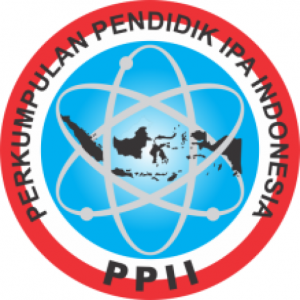Formulation and Evaluation of the Physical Properties of Anti-Acne Cream Containing Methanol Extract of Ashitaba Herb (Angelica keiskei)
Authors
Agriana Rosmalina Hidayati , Dedianto Hidajat , Wahida Hajrin , Nisa Isneni Hanifa , Mahacita Andanalusia , Regina Tria Hidayati , Alpa Alfi Rizki , Prianggawe Prianggawe , Muhammad Rafi Bintang Ramadhan , Adila RizkikaDOI:
10.29303/jbt.v25i4a.10501Published:
2025-11-06Issue:
Vol. 25 No. 4a (2025): Special IssueKeywords:
Ashitaba herb, cream, physical properties test.Articles
Downloads
How to Cite
Downloads
Metrics
Abstract
Ashitaba herb contains flavonoids, phenolics, tannins, alkaloids, and terpenoids, which are known to have antioxidant, antibacterial, and anti-inflammatory properties. Therefore, ashitaba has the potential to be developed into anti-acne preparations, one of which is cream. Creams have various advantages, namely the ability to deliver hydrophilic and hydrophobic compounds better, provide better moisture, and have emollient and occlusive properties by forming a protective layer on the skin and maintaining skin hydration longer. The purpose of this study was to determine the physical properties of methanol extract cream preparations of ashitaba herb. The research method used was laboratory experimental. Ashitaba herb was extracted using the sonication method with 80% methanol solvent to produce a solid extract. The ashitaba herb's methanol extract was combined to create a cream preparation, and its physical characteristics such as homogeneity, pH, viscosity, spreadability, adhesion, and cream type were assessed. The physical property testing revealed that the cream preparation had a unique scent, a thick consistency, and a green hue. This resulted in a homogenous oil-in-water (O/W) type cream preparation with a pH of 6.29, viscosity of 37.050 cp, spreadability of 5.23 cm, and adhesion of 4.59 seconds. Thus, it can be said that the production of the methanol extract of ashitaba herb cream satisfies the requirements and has good physical qualities.
References
B2P2TOOT. (2011). Pedoman Umum Panen dan Pascapanen Tanaman Obat. In Kemenkes RI Badan Litbang Kesehatan Balai Besar Penelitian dan Pengembangan Tanaman Obat Tradisional (Vol. 53, Issue 9).
Barnes, T. M., Mijaljica, D., Townley, J. P., Spada, F., & Harrison, I. P. (2021). Vehicles for drug delivery and cosmetic moisturizers: Review and comparison. In Pharmaceutics (Vol. 13, Issue 12). https://doi.org/10.3390/pharmaceutics13122012
Deniansyah, A. P. (2022). Formulation and Physical Quality Assesment of Karamunting Leaf Extract Cream (Rhodomytus tomentosa). Indonesian Jornal of Pharmacy and Natural Product, 5(1), 51–59.
Dessinioti, C., & Katsambas, A. (2022). Antibiotics and Antimicrobial Resistance in Acne: Epidemiological Trends and Clinical Practice Considerations. Yale Journal of Biology and Medicine, 95(4), 429–433.
Dewi, N. L. ., Adnyani, L. P. S., Pratama, R. B. R., Yanti, N. N. D., Manibuy, J. I. 1, & K., W. N. (2018). Dewi dkk. Pemisahan, Isolasi, dan Identifikasi Senyawa Saponin dari Herba Pegagan (Centella asiatica L. Urban). Jurnal Farmasi Udayana, eISSN(2), 68–76.
Djuwarno, E. N. *, Hiola, F., & Isa, I. (2021). Formulasi Sediaan Emulgel Ekstrak Daun Kelor (Moringa oleifera Lam) Dan Uji Aktivitas Antioksidan Menggunakan Metode DPPh. Indonesian Journal of Pharmaceutical Education, 1(1), 10–19. https://doi.org/10.37311/ijpe.v1i1.9947
Dréno, B., Dagnelie, M. A., Khammari, A., & Corvec, S. (2020). The Skin Microbiome: A New Actor in Inflammatory Acne. In American Journal of Clinical Dermatology (Vol. 21, Issue s1, pp. 18–24). Springer International Publishing. https://doi.org/10.1007/s40257-020-00531-1
Febrianto, S. (2023). Aktivitas Antibakteri Fraksi Etil Asetat Dari Ekstrak Metanol Herba Angelica keiskei Terhadap Bakteri Staphylococcus epidermidis. Universitas Mataram.
Firmansyah, & Nurilmi Adriana, A. (2023). Formulasi Dan Uji Mutu Fisik Sediaan Krim Body Scrub Ekstrak Kulit Pisang Goroho (Musa acuminate L.) Formulation And Physical Quality Test Of Body Scrub Cream Musa Acuminate Peel Extract. Paps Journal, 2(1), 2830–7070.
Fox, L., Csongradi, C., Aucamp, M., Du Plessis, J., & Gerber, M. (2016). Treatment modalities for acne. Molecules, 21(8). https://doi.org/10.3390/molecules21081063
Garg, A., Aggarwal, D., Garg, S., & K. Single, A. (2002). Spreading of semisolid formulations: An update. Pharmaceutical Technology North America, 26(9), 84–105.
Hidayati, A. R., Hidrajat, D., Muliasari, H., Hajrin, W., & Hanifa, N. I. (2022). Laporan Penelitian Peningkatan Kapasitas: Pengembangan Sediaan Gel Antiacne Dari Herba Ashitaba (Angelica keiskei).
Hidayati, A. R., Hidrajat, D., Muliasari, H., Hajrin, W., & Hanifa, N. I. (2023). Laporan Penelitian Peningkatan Kapasitas: Uji Aktivitas Sediaan Gel Antiacne Dari Herba Angelica Keiskei Secara In Vitro dan In Vivo. In Lembaga Penelitian dan Pengabdian Kepada Masyarakat Univeristas Mataram. https://www.ncbi.nlm.nih.gov/books/NBK558907/
Indradewi, F., Sandra, A. M., Irnawati, Didi, D. ., & Hamid, M. (2018). Uji Aktivitas Antioksidan Ekstrak Air, Ekstrak Etanol dan Ekstrak Etanol Terpurifikasi Krokot (Portulaca oleracea Linn.) Asal Sulawesi Tenggara dengan Metode DPPH. Seminar Nasional Teknologi Terapan Berbasis Kearifan Lokal (SNT2BKL), 490–497.
Khadijah, Z. (2015). Khasiat Dahsyat Minyak Zaitun. Gapura Publishing.
Kholis, M., Anwar, M., & Prasetyowati, R. E. (2022). Dampak Pandemi Covid 19 Terhadap Pendapatan Usahatani Bawang Putih (Allium Sativum) Di Kecamatan Sembalun. Journal of Agri Rinjani: Social Agricultural Economics - Faculty of Agriculture, UGR, 2(2), 47–55. https://doi.org/10.53952/jar.v2i2.197
Mudhana, A. R., & Pujiastuti, A. (2021). Pengaruh Trietanolamin Dan Asam Stearat Terhadap Mutu Fisik Dan Stabilitas Mekanik Krim Sari Buah Tomat. Indonesian Journal of Pharmacy and Natural Product, 4(2), 113–122. https://doi.org/10.35473/ijpnp.v4i2.1342
Ohkura, N., Atsumi, G., Uehara, S., Ohta, M., & Taniguchi, M. (2018). Ashitaba (Angelica keiskei) Exerts Possible Beneficial Effects on Metabolic Syndrome. OBM Integrative and Complementary Medicine, 4(1), 1–1. https://doi.org/10.21926/obm.icm.1901005
Permatasari, N. M. A. D. (2023). Uji Aktivitas Antiradikal DPPH (1,1-difenil-2- pikrilhidrazil) Fraksi Kloroform, Etil Asetat dan Air dari Herba Ashitaba (Angelica keiskei). Universitas Mataram.
Putri, I. A. N. T. N. A. (2023). Uji Aktivitas Antibakteri Fraksi Kloroform Herba Ashitaba (Angelica keiskei) Terhadap Staphylococcus epidermidis. Universitas Mataram.
Ramadhan, M. A. (2024). Uji Aktivitas Antiinflamasi Ekstrak Dan Sediaan Gel Anti-Akne Ekstrak Metanol 80% Herba Ashitaba (Angelica Keiskei). In Skripsi. Universitas Mataram.
Rowe, R. C., Sheskey, P. J., & Quinn, M. E. (2009). Handbook of Pharmaceutical Excipients, ninth Edition. In Handbook of Pharmaceutical Excipients, ninth edition (p. 1400). Pharmaceutical Press.
Shintyawati, D., Widiastuti, R., & Sulistyowati, R. (2024). Formulasi dan Uji Stabilitas Fisil Emulgel Ekstrak Daun Binahong (Anredera cordifolia) Sebagai Tabir Surya. Forte Journal, 4(1), 01–12. https://doi.org/10.51771/fj.v4i1.626
Subaryanti, Durkas, S. D. M., & Manalu, R. T. (2022). Potensi Antimikroba Ekstrak Etanol Daun Gatal (Urticastrum decumanum (Roxb.) Kuntze) Terhadap Pertumbuhan Staphylococcus aureus dan Candida albicans Antimicrobial. Sainstech Farma, 15(2), 93–102.
Thomas, N. A., Andy, S., Latif, S. M., Hutuba, A. H., & Susanti, S. (2024). Formulasi Dan Uji Stabilitas Fisik Krim Pelembab Ekstrak Rumput Laut (Eucheuma cottonii). Indonesian Journal of Pharmaceutical Education, 4(1), 1–9. https://doi.org/10.37311/ijpe.v4i1.20522
Vasam, M., Korutla, S., & Bohara, R. A. (2023). Acne vulgaris: A review of the pathophysiology, treatment, and recent nanotechnology based advances. Biochemistry and Biophysics Reports, 36. https://doi.org/10.1016/j.bbrep.2023.101578
Wahyudi, L. I. (2023). Optimasi Formulasi Sediaan Gel Ekstrak Metanol Herba Ashitaba (Angelica keiskei) Dengan Metode Simplex Lattice Design. Universitas Mataram.
Wardania, A. K., Malfadinata, S., & Fitriana, Y. (2020). Uji Aktivitas Antibakteri Penyebab Jerawat Staphylococcus epidermidis Menggunakan Ekstrak Daun Ashitaba (Angelica keiskei). Lumbung Farmasi: Jurnal Ilmu Kefarmasian, 1(1), 14. https://doi.org/10.31764/lf.v1i1.1206
Wardoyo, E. R. P., Hildayati, U., Rachmawati, & Kurniatuhadi, R. (2021). Phytochemical analysis and antifungi activity of methanol extract of Acalypha hispida Burm. F. flower against to Candida albicans (Y116). Journal of Physics: Conference Series, 1940(1). https://doi.org/10.1088/1742-6596/1940/1/012056
Widiyastuti, Y. (2020). Pengembangan Parameter Standar Simplisiaa Untuk Menjamin Mutu dan Keamanan Obat Tradisional. In Badan Penelitian Dan Pengembangan Kesehatan Kementerian Kesehatan RI.
Yadav, S. K., Mishra, M. K., Tiwari, A., & Shukla, A. (2016). Emulgel: a New Approach for Enhanced Topical Drug Delivery. International Journal of Current Pharmaceutical Research, 9(1), 15. https://doi.org/10.22159/ijcpr.2017v9i1.16628
License
Copyright (c) 2025 Agriana Rosmalina Hidayati, Dedianto Hidajat, Wahida Hajrin, Nisa Isneni Hanifa, Mahacita Andanalusia, Regina Tria Hidayati, Alpa Alfi Rizki, Prianggawe Prianggawe, Muhammad Rafi Bintang Ramadhan, Adila Rizkika

This work is licensed under a Creative Commons Attribution 4.0 International License.

Jurnal Biologi Tropis is licensed under a Creative Commons Attribution 4.0 International License.
The copyright of the received article shall be assigned to the author as the owner of the paper. The intended copyright includes the right to publish the article in various forms (including reprints). The journal maintains the publishing rights to the published articles.
Authors are permitted to disseminate published articles by sharing the link/DOI of the article at the journal. Authors are allowed to use their articles for any legal purposes deemed necessary without written permission from the journal with an acknowledgment of initial publication to this journal.


























